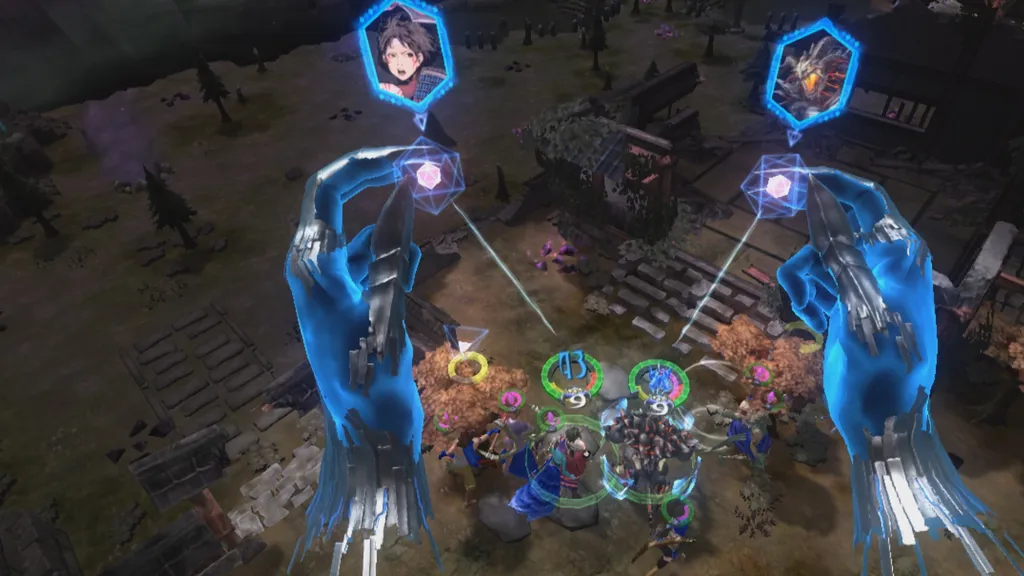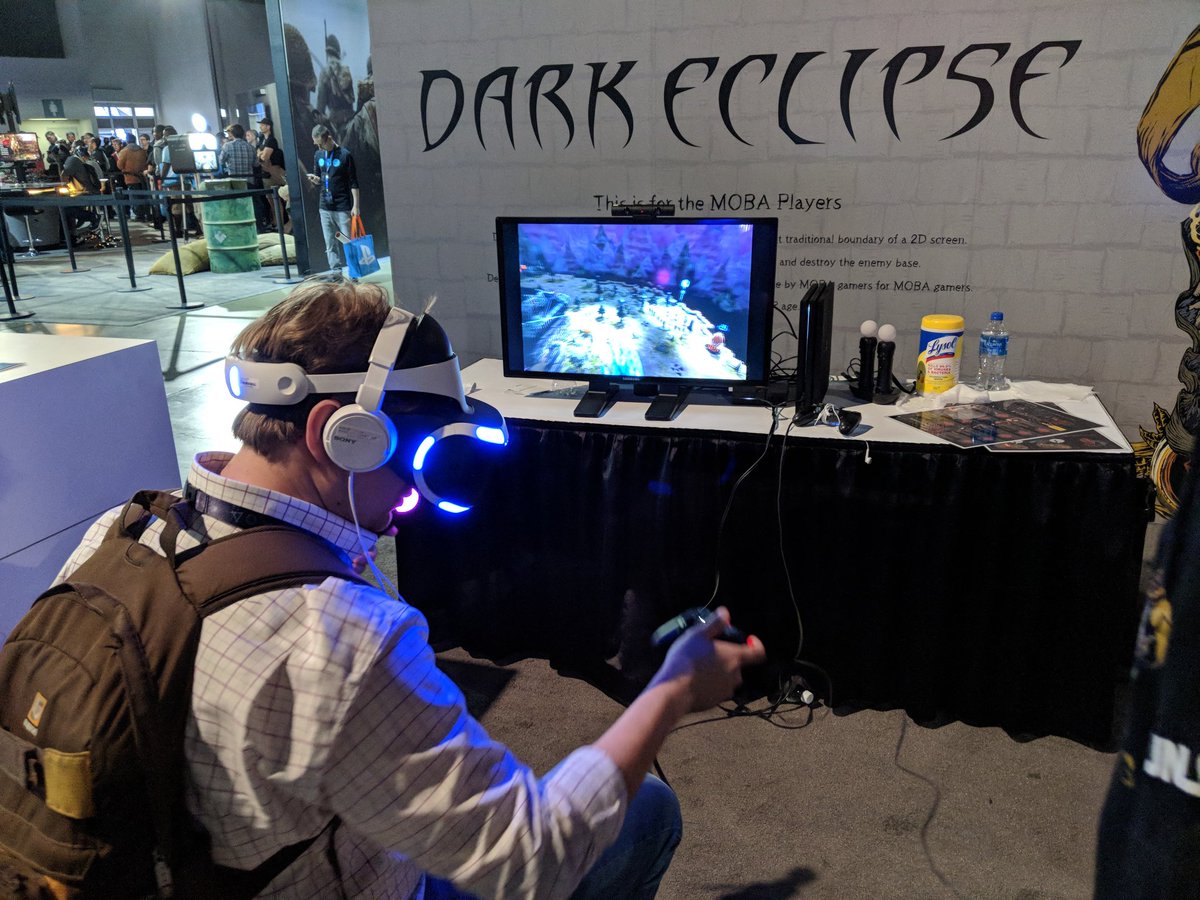If Sunsoft was hoping to return to the western market with a bang, it’s made some odd choices. Dark Eclipse is not a nostalgic resurrection of some of the Japanese developer’s beloved early Nintendo-era titles (which include Batman on NES and The Death And Return of Superman), but instead an obscure and obtuse multiplayer online battle arena (MOBA), played exclusively within a VR headset no less. I respect the boldness, if nothing else.
Still, Dark Eclipse will no doubt have its fanbase, however small, and it deserves one alone for the thought that’s gone into retooling a genre dominated by mouse and keyboard.
In this free-to-play PSVR exclusive, you fight for control of a map by ordering three leader units (including one main hero and two monsterish support units) to various points and building towers. If you’re a regular to the genre, this is hardly groundbreaking stuff; gather resources to build towers in fixed positions, upgrade units to take down enemy towers and eventually lead an assault on your opponent’s main base whilst they do the same. It’s easy to feel overwhelmed at first (and the game’s tutorial doesn’t do a great deal to help), but the somewhat sluggish pace will at least help you find your feet.
Where Dark Eclipse does innovate, though, is in its distillation of the genre to accommodate PSVR. Playing with a single Move controller (you can also play with a DualShock 4 though it’s a little awkward), you can navigate the game’s relatively small maps with a surprising degree of intuition. Simply hold the Move button and tilt the controller to pan across the map, or hold down a face button and move it up or down to zoom in and out. You get the hang of it in seconds.
Moving units, meanwhile, is done by grabbing a marker above their head and then dragging it to the desired location. Simply tapping other items of interest has selected characters interact with them, too. All of this makes getting around in Dark Eclipse’s world wonderfully light, though it still can’t quite escape the frantic fluster that will have you begging for a mouse in its more demanding moments. Characters do move at a snail’s pace and you can set the view to cover as wide an area as possible, but I still sometimes felt weighed down with the Move controller.
Crucially, the game’s microtransactions are done pretty well, too. From what I can tell, they’re simply for buying new Leaders, though there’s a fair number available from the start. You can earn coins to put towards new unlocks or just buy them from the off as well. It’s likely the best shot the game has at building a community considering how little fanfare it’s launched to.
Interface aside, though, Dark Eclipse is not a game that’s going to win over people unconvinced by MOBAs, and I very much doubt it’ll attract much attention from fans of DOTA 2 and the like. Though it’s mechanically sound and easy enough to follow, I kept coming back to the question of why this needed to be in VR and coming up empty, other than for the fact that the Leaders look like action figures. While it’s nice to have head-tracking replacing scrolling across the screen, a strict fog of war keeps you from reading what opponents are up to.
It’s fortunate that the game has a pretty fun single-player mode against AI because, frankly, if many multiplayer VR games struggle to sustain healthy online user-bases, I predict big problems for Dark Eclipse the further we get from launch. I was able to find games over the first two days but as all but the most devoted players trickle away — especially as games like Astro Bot and Evasion roll out over the next few weeks — I can’t help but expect that to change.
Still, if you were looking for proof that MOBAs can at least work in VR, Dark Eclipse is it. The next step is to convince you that you actually should play one, and there’s more work to be done there.


























